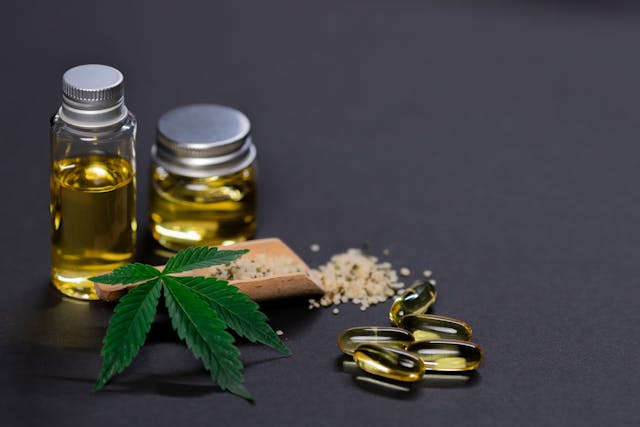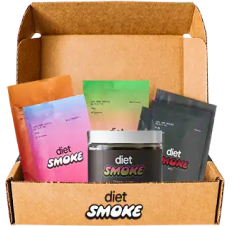
Cannabis Patents
Marijuana has been a Schedule I drug in the United States since the Controlled Substances Act of 1970. Richard Nixon and his ‘war on drugs’ didn’t care about loads of evidence showing all the medicinal uses of cannabis patents; he simply wanted marijuana banned. In fact, it was the National Commission on Marihuana and Drug Abuse that Nixon himself hired to prove the dangers of cannabis who ended up recommending cannabis patents instead be decriminalized based on the results of their findings. Unfortunately, the reasons for the banning of marijuana were not necessarily fair or logical, but here we are in 2019, and it is still a highly controlled substance.
Throughout the years, as marijuana has been up for rescheduling again and again, the Drug Enforcement Administration (DEA) continues to refuse regardless of studies showing marijuana’s numerous benefits. The DEA’s most recent refusal to reschedule marijuana happened in 2016. For the record, a Schedule I drug is one that has ‘no current accepted medicinal value in the United States.’ That’s where we’re at with marijuana currently, which seems ludicrous, especially considering that opioids have created an unprecedented crisis in the country for all the harm they cause. Still opioids are more useful than marijuana in the eyes of the government.
All this isn’t really news. We know the national government has long been ignoring the benefits of marijuana that countless studies have shown. What is curious, however, is that, despite keeping marijuana a Schedule I drug, the US Department of Health and Human Services (HHS) has a patent on certain parts of the marijuana plant. Patent no. 6,630,507 covers:
- the potential use of non-psychoactive cannabinoids to protect the brain from damage or degeneration caused by certain diseases, such as cirrhosis.
The patent also covers cannabinoids that are useful in treating things like Alzheimer’s, Parkinson’s, and HIV dementia.
How can it be that the government keeps cannabis a Schedule I drug while at the same time having a patent on the plant for its medicinal uses? Is this utter hypocrisy, or are we missing something?
To be clear, the HHS does not have a cannabis patents on marijuana as a whole. The patent covers only parts of the plant, including the natural and synthetic non-psychoactive cannabinoids, including cannabidiol (CBD). CBD, as most cannabis-friendly folks know at this point, does not get anyone high. It is for this reason it seems there is some kind of loophole that has permitted cannabis patent no. 6,630,507 to go through.
How The US Government First Got a Cannabis Patents
Back in 1999, three scientists from the National Institute of Mental Health (NIMH), Hampson, Axelrod, and Grimaldi, filed for patent no. 6,630,507. In 2003, the HHS gave them their cannabis patents. NIMH is part of the larger government agency, the National Institute on Drug Abuse (NIDA). NIDA is notorious for their anti-marijuana stance, publishing lots of studies that show marijuana is very bad.
Perhaps the fact that there are more than 20,000 studies that have shown marijuana’s positive medical effects is what led to NIDA granting this marijuana patent, especially since it only covers CBD, the non-psychoactive elements of the plant, for treating neurological conditions. Within the patent, it states the scientists discovered that there are antioxidant properties in CBD. It also states that any cannabinoid that acts through receptors such as THC is not covered. Still, issuing the patent in the first place seems to contradict marijuana being a Schedule I drug, seeing that the schedule itself is meant for substances that are dangerous and not useful for medical purposes in any way.
As time passes, cannabis research provides more and more peer-reviewed evidence that marijuana is effective in treating a vast array of medical issues, including cancer, glaucoma, multiple sclerosis, chronic pain, arthritis, asthma, insomnia, depression, and epilepsy. What’s more, it is also less expensive and less dangerous than many drugs currently used to treat many of these conditions. It makes sense that a patent for marijuana would be issued to create a better quality of life for people afflicted with any of these conditions. What does not make sense is why it is still a Schedule I drug.
Why Is Cannabis Still So Illegal Despite This Patent?
The National Institute of Health (NIH) hires about 6,000 Ph.D. scientists to oversee all the studies in its institutions. If a notable discovery is made, the decision must be made about whether to file a patent. Patent no. 6,630,507 was granted as a result of research showing the possibility that parts of the cannabis plant, those that are non-psychoactive, are effective in the treatment of neurological diseases. Because relief from these diseases via the cannabis plant is possible without getting high from THC, the patent was granted.
The patent does not say there is proof that treatment using cannabinoids is effective. That would require laboratory purification and synthesis of the compound, not to mention loads of animal and human testing, plus being approved by the FDA once all that is done, like what has happened with Epidiolex.
In other words, the patent was granted because–at the time it was applied-for–there was a possibility that it could be effective, and worthy of further research. In the meantime, the government has kept its potential largely hidden from the public and classified as a Schedule I drug.
Green in More Places Than One
That patent has a bit more complexity than just looking into the medical possibilities of certain parts of the cannabis plant, however. The government may have more than just public health in mind when this patent went through. There’s a lot of money to be made in the event that elements of the cannabis plant do provide effective medical treatments. In fact, the amount of money that certain firms could come into as a result of patent no. 6,630,507 is no small sum. This begs the question: who exactly is set to be making money off this deal?
Kannalife Sciences Inc. is a company based in New York. They obtained a license from the NIH in 2011 to use some of the patent’s technology. What they want to do is develop CBD-based medicines to treat hepatic encephalopathy (CTE), a form of brain damage. As such, Kannalife can now use the patented technology for research. In the event that they develop a successful drug, Kannalife CEO Dean Petkanas mentioned the government would get a huge percentage of sales that could result in six-figure royalties.
If the government has known about these potential benefits of parts of the cannabis plant, why did they deny the rescheduling of marijuana in 2016? Keeping marijuana a Schedule I drug makes it harder for other research to be done, which benefits Kannalife and the US government financially.
Before 2016, Kannalife was the only company with a license to a piece of the patent. That changed when GW Pharmaceuticals also got its own piece of the patent as it completed its new drug application for Epidolex. Epidolex is a drug developed using CBD to treat seizures. Upon approval, the drug could earn upwards of $2.2 billion a year. Seeing that the government will receive royalties from that as well, it raises questions about the real reasons marijuana has been kept a Schedule I drug.
With the legalization across many US states in recent years, companies have been both applying for and getting approved for patents using cannabinoids like CBD to make medicine for a variety of medical conditions. In 2018, the US Patent and Trademark Office issued 39 patents which contained the words marijuana or cannabis in their summaries. In 2017, that number was 29, and in 2016, only 14. Those patents are for different uses of cannabinoids than patent no. 6,630,507, though still completely leaving out THC.
Patent no. 6,630,507 expires on April 21, 2019. After that, using the cannabinoids outlined in the patent will be fair game for everyone, though any drugs created will still have to be approved by the FDA.
A Case of Hypocrisy Cannabis Patents
Even professionals like Gregory F. Wesner, a patent and trademark attorney, don’t deny the hypocrisy in patent no. 6,630,507. By classifying marijuana as a Schedule I drug, it means that all parts of the plant are deemed unsafe for consumption, according to the DEA and US government. Yet, the US government has a patent on synthetic cannabinoid drugs derived from marijuana, which are then being approved by the FDA.
Legalizing marijuana nationally would dramatically change the distribution of profits from marijuana, as many people and companies would be filing for patents almost immediately. The low number of patents approved per year despite abundant research showing the medical benefits of the plant serves to show how stifled the industry is by keeping marijuana a Schedule I drug. This begs the question: why does the US government continues to keep marijuana a Schedule I drug? Companies like Kannalife and GW Pharmaceuticals would be up against competition instead of having the industry nearly all to themselves, which would would cut into both their own profit and the profit the government. Companies like Kannalife and GW Pharmaceuticals would be up against competition instead of having the industry nearly all to themselves, which would would cut into both their own profit and the profit the government.
Written by Diet Smoke Staff Writers
The staff writers for Diet Smoke have been researching and writing about premium hemp-derived THC and CBD products for more than 3 years. The team has a keen understanding of the topic, remain current on all FDA and industry news, and use their expertise to generate engaging and informative content to help educate consumers on Diet Smoke’s products. Each article is fact-checked and includes sources to scientific data to ensure readers receive the most up-to-date and accurate information possible.
Reviewed By Colby Wohlleb
Colby Wohlleb, editor of Diet Smoke, reviews and approves all content before releasing it for posting on the Diet Smoke website. As a tireless advocate for the benefits of premium hemp-derived THC and CBD products, Colby ensures that all content is accurate, engaging, and informative. He also works directly with a trusted source to ensure the purity of the products we sell and performs rigorous lab testing to ensure that Diet Smoke’s products (such as the Delta 8 gummies and Delta 9 gummies) are of the highest quality and safety standards.



